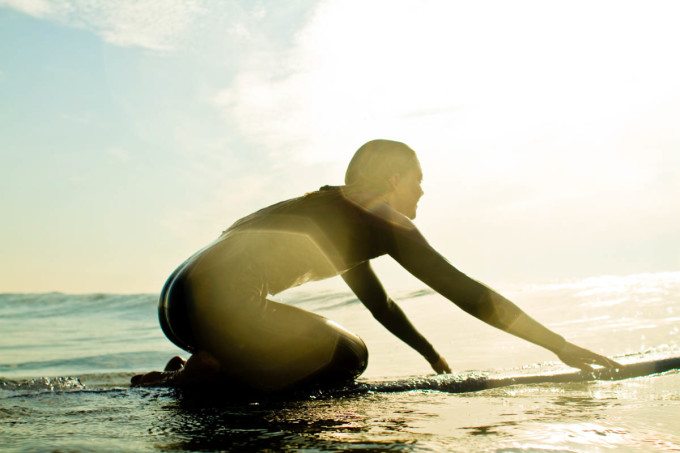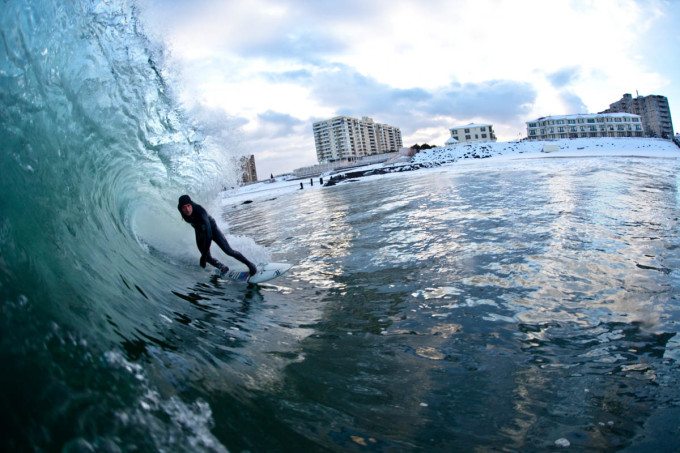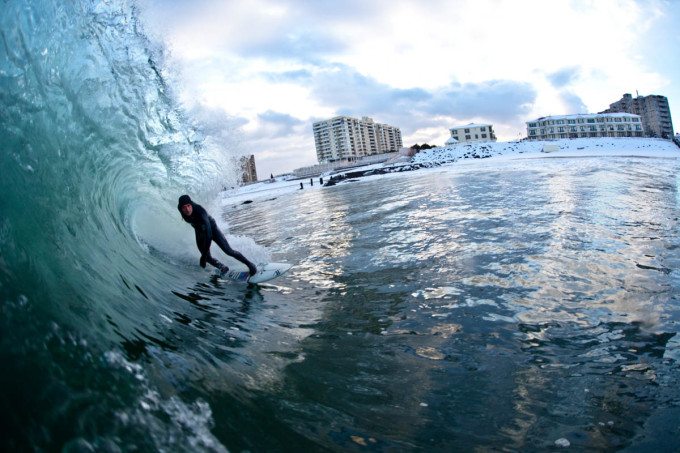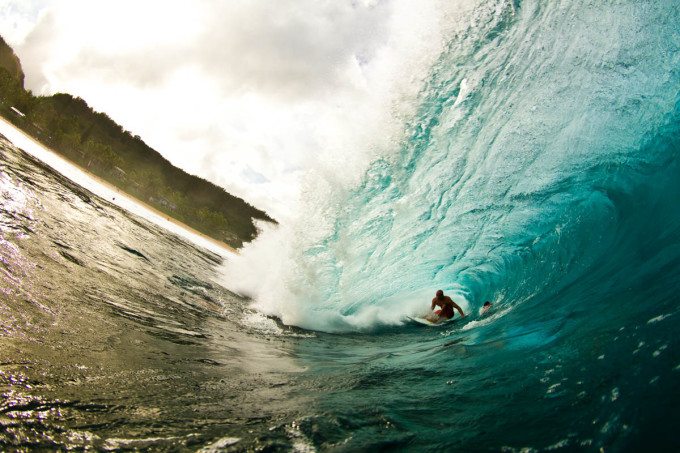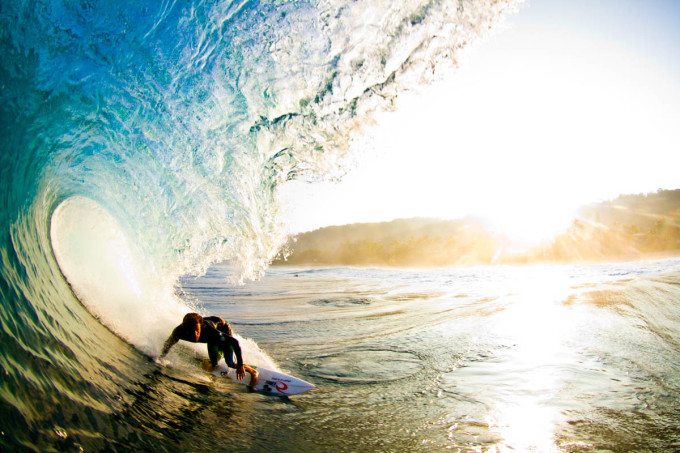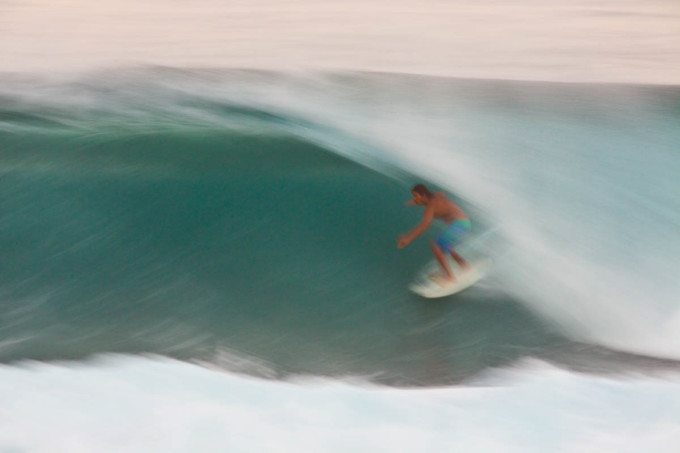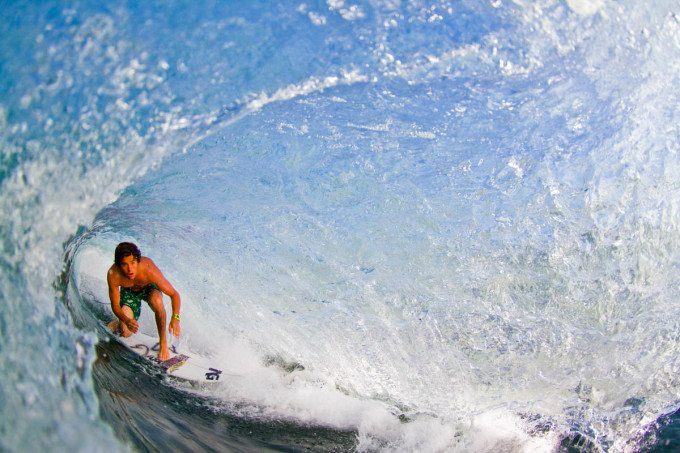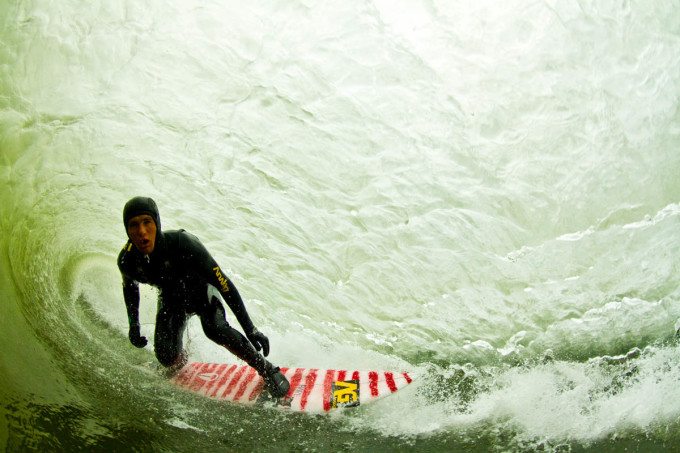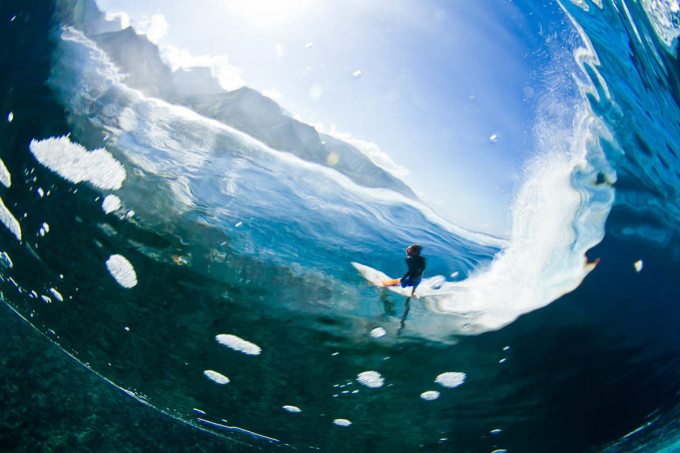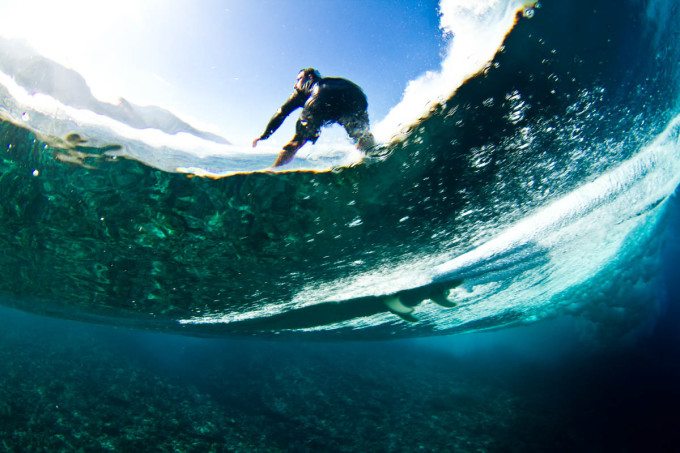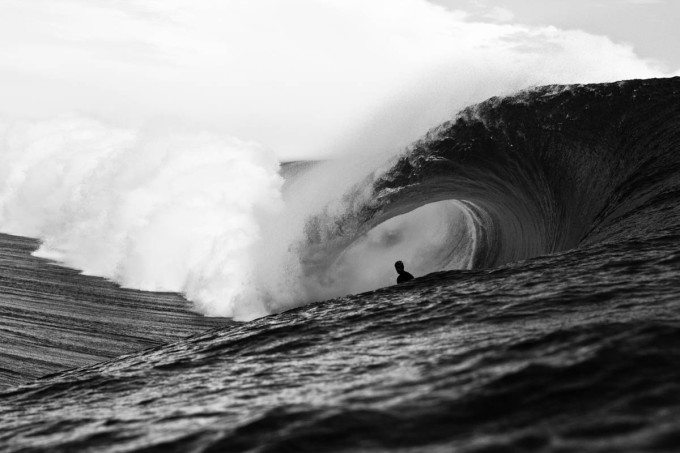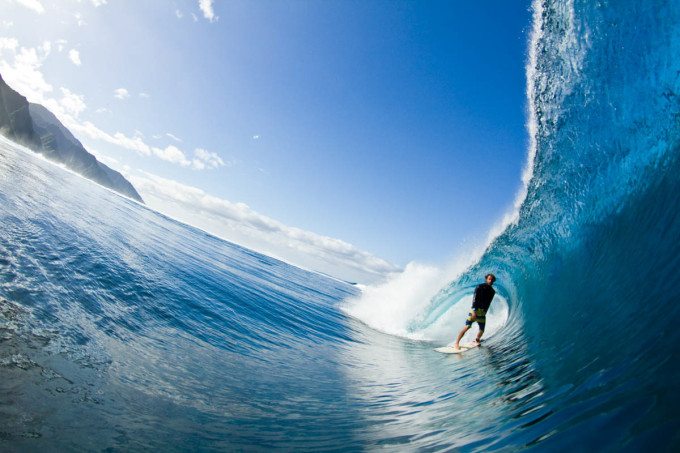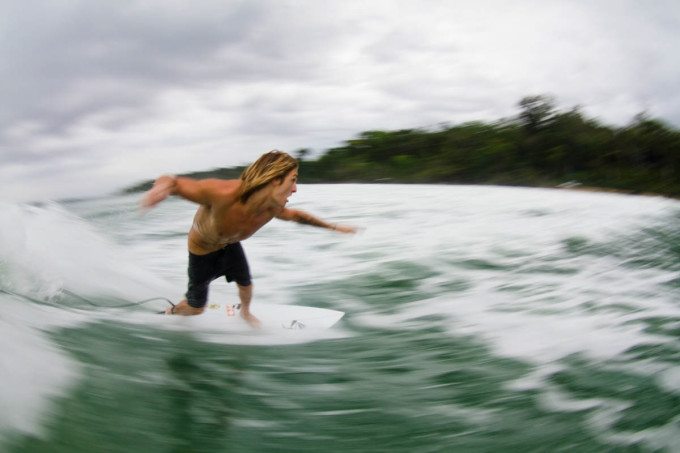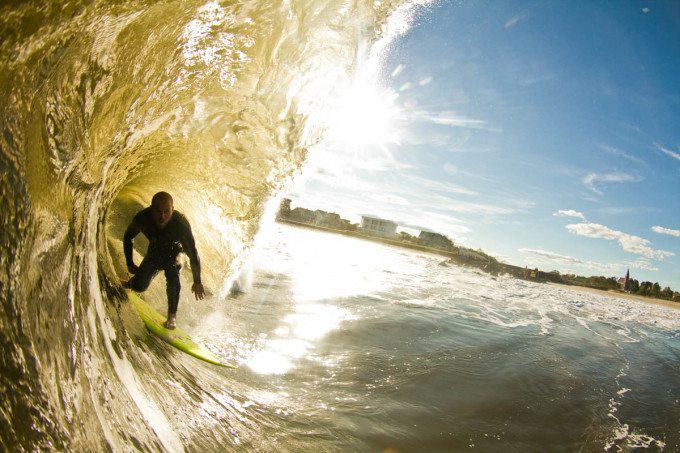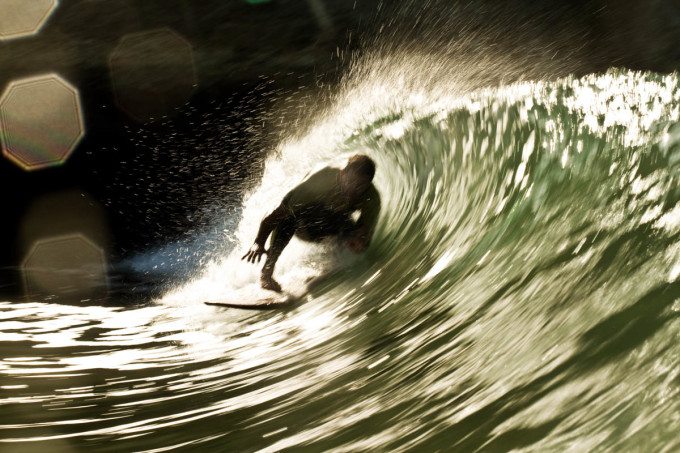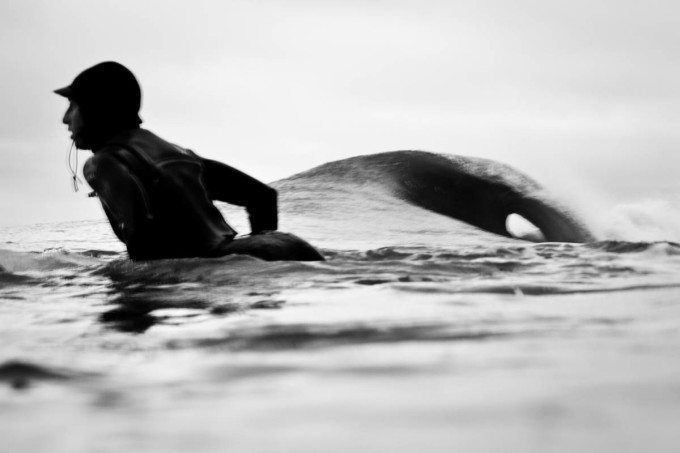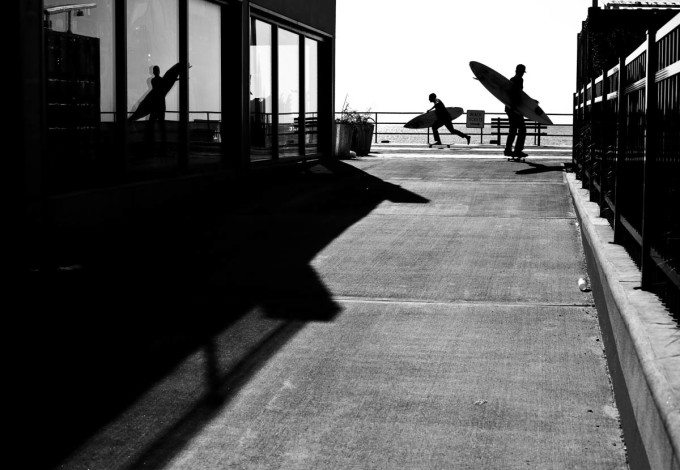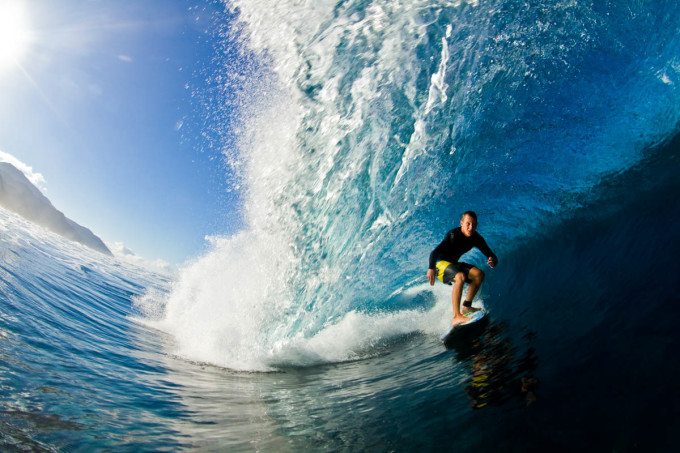
All images by Ryan Struck. Used with permission.
“Good photos don’t happen every time you click the shutter, but it’s that dogged attitude that pushes you towards poignant moments worth recording.” says Photographer Ryan Struck, a 30 year old, self-taught Brooklyn based photographer. “Earning a BA in History allowed me to investigate the things that have occurred in the world of which I knew nothing about. In that same spirit, photography allows me to be curious about the world and what surrounds us.”
Ryan has been working on a series for a while documenting the stories and lives of surfers on the East Coast of America. With lots of the work so far being in the North East, he’s a photographer with a desire to capture images that help viewers imagine the instant the shutter clicked, And besides light, there are lots of other elements to creating inspiring images of surfers.
Phoblographer: Talk to us about how you got into photography.
Ryan: I’ve always had an interest in photography since high school, but never owned an SLR until college. My grandma wanted to pay me to paint her house, I asked instead if we could trade for a camera and she agreed. I wasn’t allowed to major in photography in college but I was allowed to work for a camera. I always found that an interesting thought. Since then photography has always been on my mind.
Phoblographer: What made you want to photograph surfers?
Ryan: What initially drew me to the waves was my love of the ocean. I first paddled out to surf around at 18 or 19 years of age and since then the ocean has been a constant source for renewal. Beautiful light and interesting scenes abound at the beach, I just felt this incredible urge to shoot photos.
Phoblographer: Your surfing photos have various compositions, angles, views, etc. What inspires you when you’re creating these images and how do you mentally and artistically try to ensure that no two images look alike?
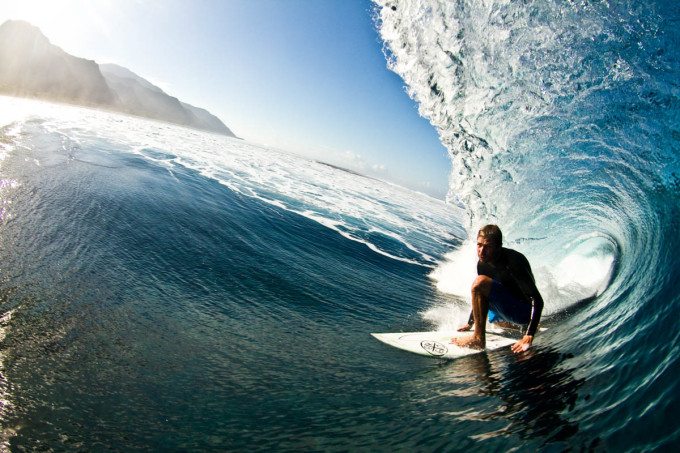
Ryan: Sunlight is the most inspiring experience. I have literally stopped in my tracks to watch the light fall during golden hour. Next time you’re watching a beautiful sunset, I suggest facing away from the light. Using your eyes, just see what you can see. That’s my favorite. So in that spirit I try and look at things people often miss or overlook. I don’t want the same things as everyone else, I’ve always wanted something different. I seek out interesting lighting and beautiful views. I let my eyes relax and allow them to draw their own conclusions of beauty. I guess I’m following my heart and that always puts me in a great place to pursue my interest of the world.
Phoblographer: What kind of gear do you use to do this type of work? How does it specifically help you get the images you want?
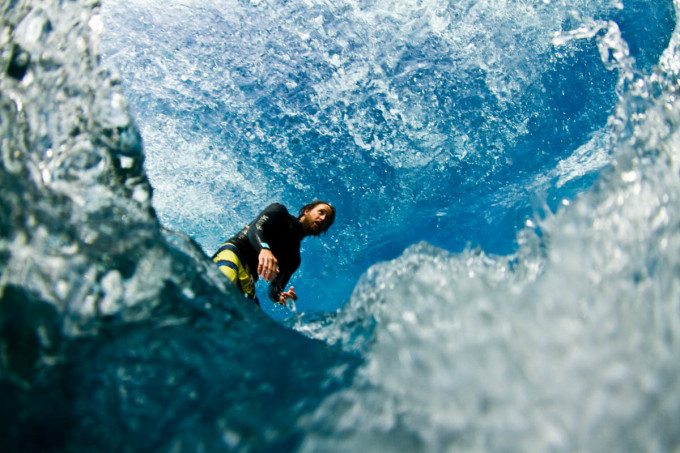
Ryan: I’m using everything I can get my hands on. I’ve shot 120mm Aerochrome to Canon DSLRs. I’m shooting stills and video, I’m sharing from my iPhone and I’m backing everything up on my Western Digital drives. I love the medium and I’m always trying something new to stay inspired. I am mostly shooting digital, and I tend to shoot a lot.
Every wave is unique, no two are the same. Some may have the same behaviors, but each one proves different and I love this x factor in surfing. Sometimes I get caught up with a new favorite lens as it allows me a perspective that I hadn’t seen before. For a long while that was the 24mm but I’ve since moved to the 35mm, I’m a total prime junkie. Cameras and hard drives aside, the real piece of equipment that enables me to make the photographs I love is my waterproof housing. My 5D fits right into a carbon fiber casing that protects it from water. Wearing a wetsuit and swim fins I’m free swimming in the waves to make these pictures.
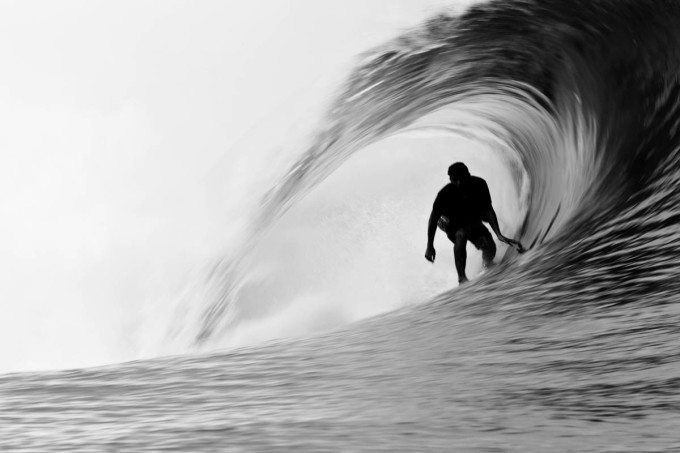
Phoblographer: The personal side of this involves lots of communication between the surfer and you. So what’s that like? Do you often watch them surf a couple of times, learn habits and then go shoot? Or are you always in the water with them and hoping to get the shot?
Ryan: That depends who I’m working with exactly and what the purpose is. So many times I’m just shooting my friends and we’re having a good time. They are just surfing to surf, and I’m just shooting to shoot. Zen moments all around. Working with a professional surfer is really incredible, you can direct them and work towards the shot you have in mind. What these guys can do with a surfboard is pretty incredible. Critical positioning is most important on my part and sometimes it can come down to luck, right place right time. 90% of success is showing up.
Phoblographer: Surfing, like most sports, can sometimes be just blind luck. So how do you increase your chances of getting the photographs that you see in your mind and want to capture?
Ryan: Previsualizing the moment you want to capture will almost always help you find a special instant. Since surfing can be so unpredictable you never know what you’re going to get out of a session. You do know though, when you get a winning image right away. The rush of excitement floods your senses when you’ve found the decisive moment. I aim to capture one good image, if I manage to do that than I’m ecstatic. Good photos don’t happen every time you click the shutter, but it’s that dogged attitude that pushes you towards poignant moments worth recording.
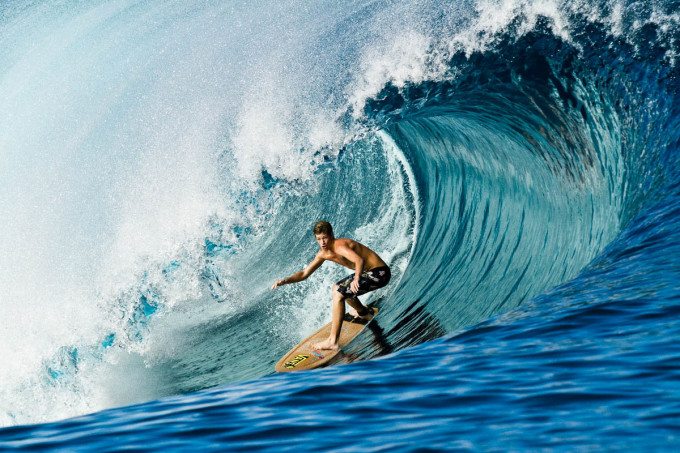
Phoblographer: What’s your editing process like? You obviously shoot lots of images so you’ll need to cull and choose the best for your portfolio?
Ryan: My standard workflow is pretty simple, download the card to my drive, import and rename in Lightroom and take a quick peek at the frames I remember liking. Many times these files will sit on my archive for awhile before I cull and color correct. For me it’s important to revisit shoots after the smoke has cleared, diving into the edit straight away isn’t my favorite method but occasionally is required. Deadlines can come into play, as well as riders want to see their photos. For what makes my portfolio, often times those images have sat well with me for awhile. When you can revisit work and still feel proud of it than you know you’ve chose the right images to show.
Phoblographer: What’s the biggest thing you’ve learned about your work in the past year and how to improve it?
Ryan: The biggest thing I’ve learned about my work in the past year is that you can’t predict what’s going to happen. Ok ok, on an existential level, thats what we as photographers are all doing. We’re predicting the future. For example, when a person walks through a slash of light on a street corner, I will intuitively click the shutter because I know with that light, their interesting face and this location, the resulting picture will be something different.
You could argue I still don’t know what exactly is going to happen in that situation, but the point is that my career in photography has been something I can’t predict like where to point my camera to record an interesting moment. I’ve wanted to know the answer to “What’s next,” for so long that it would keep me up at night. I wanted to know when is my next job, or where is my next idea for a personal project. When will inspiration hit? I think as I keep pace, I’m learning that I won’t know the answers to many questions I may have. The more I learn, the more I feel I don’t know. I will forever be a student of light and I’ve become comfortable with that fact.
